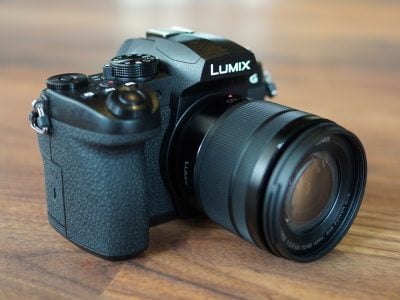Panasonic Lumix G90 G95 review
-
-
Written by Gordon Laing
In depth
The Panasonic Lumix G90, or G95 as it’s known in North America, is a mid-range mirrorless camera with a 20 Megapixel Four Thirds sensor, built-in stabilisation, fully-articulated screen and unlimited 4k video recording. Announced in April 2019, it replaces the two year old Lumix G80 / G85 and is aimed at photographers and vloggers who want a powerful hybrid camera without breaking into a four-figure price tag.
The G90 / G95 employs what Panasonic describes as a new 20 Megapixel Four Thirds sensor with no low pass filter, allowing it to match the image quality of the higher-end Lumix G9. There’s built-in five-axis sensor-shift stabilisation which can work alongside the optical stabilisation of Dual IS lenses to deliver five stops of compensation, while burst shooting is rated at 6fps with continuous autofocus or 9fps without. 4k video is available at 24, 25 or 30p, or 1080 video at 25, 30, 50 or 60p, and impressively the camera can film unlimited clips in any mode while battery or memory remains; slow motion is also available with 1080 up to 100 or 120p for a four times slowdown in-camera. Panasonic has also included the flat V-Log L profile as standard, an option that’s previously been a paid-for firmware update on its highest-end models – good news for anyone who wants to try grading on a budget. Suffice it to say the G90 / G95 also offers Panasonic’s 4K Photo modes including Post Focus, as well as a new Live View Composite mode for easier long exposures.
The weatherproof body sports a generous grip, a 2360k dot OLED viewfinder with 0.74x magnification, a fully articulated side-hinged OLED touchscreen that can flip-forward for vlogging, new dedicated buttons for white balance, ISO and exposure compensation on the top surface, and a generous array of ports including microphone and headphone jacks, as well as HDMI with 4:2:2 8-bit output and Micro USB for charging and power delivery; meanwhile the wireless connectivity includes Wifi and Bluetooth, the latter providing a constant link for easy location tagging and remote control. Find out in my in-depth vide review below how it compares to rivals including the Sony A6400, Fujifilm X-T30 and Panasonic’s own Lumix G9! If you prefer to read, I’ve pulled out the highlights below the video itself.
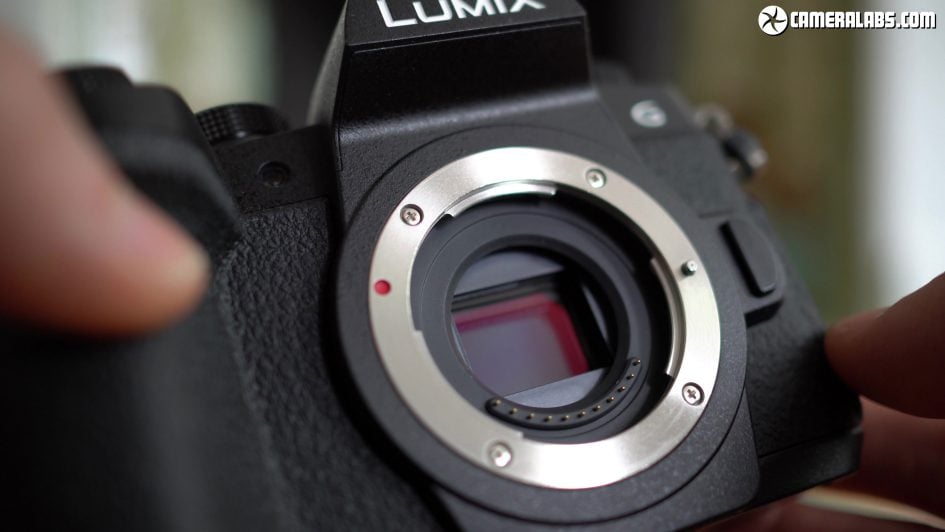
The Lumix G90 is equipped with a 20 Megapixel Four Thirds sensor without a low-pass filter, and while Panasonic describes it as a new sensor, the photo quality should match the higher-end G9 – we’ll see if that’s the case in a minute. In a key advantage over the A6400 and X-T30, the sensor is stabilised within the body using a 5 axis system that can work alongside the optical stabilisation of Dual IS 2 lenses to deliver up to five stops of compensation; it’s the same as the G80 in this regard, but that’s still an extremely valuable feature. Meanwhile the Micro Four Thirds mount gives the G90 access to the broadest collection of native mirrorless lenses, a benefit many forget when discussing the format, and of course all become stabilised by the body including all those lovely primes. You can see how god it is in my vide above.
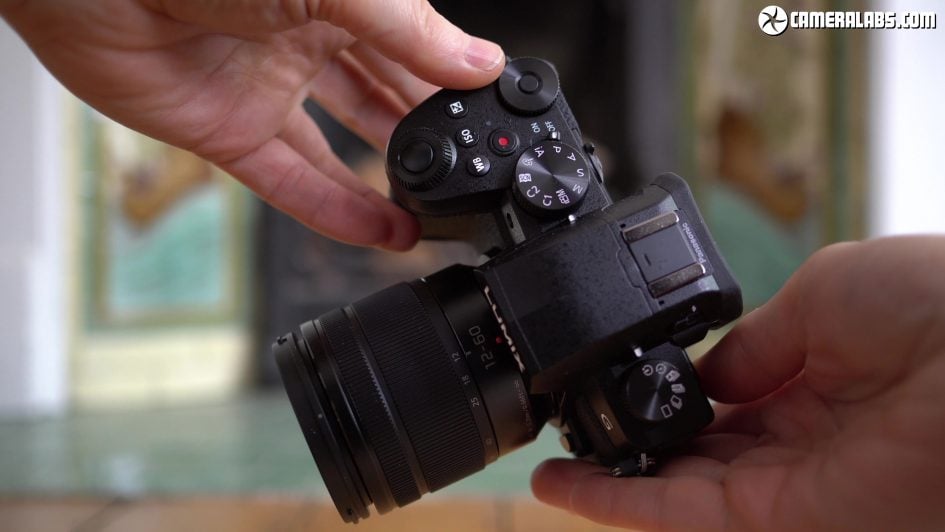
In your hands, the G90 looks and feels a lot like its predecessor, but that’s no bad thing, as you get a dust and splash resistant body – something that’s not a foregone conclusion at this price point – as well as a large, comfortable grip with a very tactile coating. I’d say it’s the most comfortable to hold of its peer group and the buttons and dials provide good feedback – it’s entirely personal of course, but I reckon Panasonic’s becoming very good at design and ergonomics. The body weighs 533g including battery, so it’s light, but not so much you fear for its build quality. There’s two kit zoom bundles available, one with the Lumix G 12-60mm seen here and another with the Lumix G 14-140mm. The 12-60mm already sported weather-sealing, and now an updated version of the 14-140mm has weather-sealing too. Thanks to the sensor size, the coverage of all lenses is reduced by two times, so the 12-60mm becomes equivalent to 24-120mm, a useful general-purpose range that also starts wider than many kit zooms.
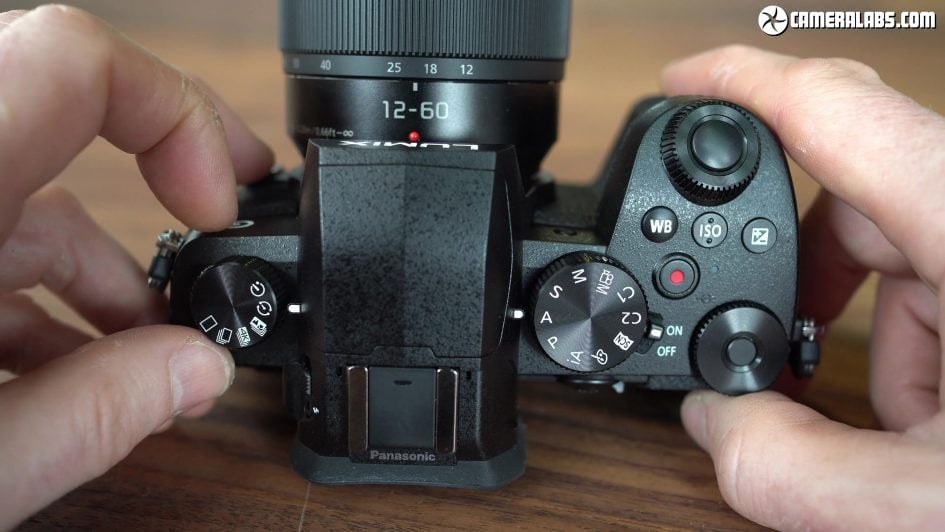
The top panel is similar to the earlier G80, starting with a drive mode dial that selects single and burst shooting – with up to 6fps with continuous AF or 9 without – as well as the 4K Photo modes I’ll talk about later, and finally the interval timer and self-timer options. On the right side is a traditional mode dial that includes intelligent auto, creative effects and two custom banks as well as a movie manual mode. In a welcome upgrade over its predecessor are three new buttons dedicated to the white balance, ISO sensitivity and exposure compensation, a considerate inclusion inherited from the G9. There’s also a dedicated movie record button, as well as front finger and rear thumb control dials, the latter featuring a button in the middle that acts like a shift key to access alternative settings.
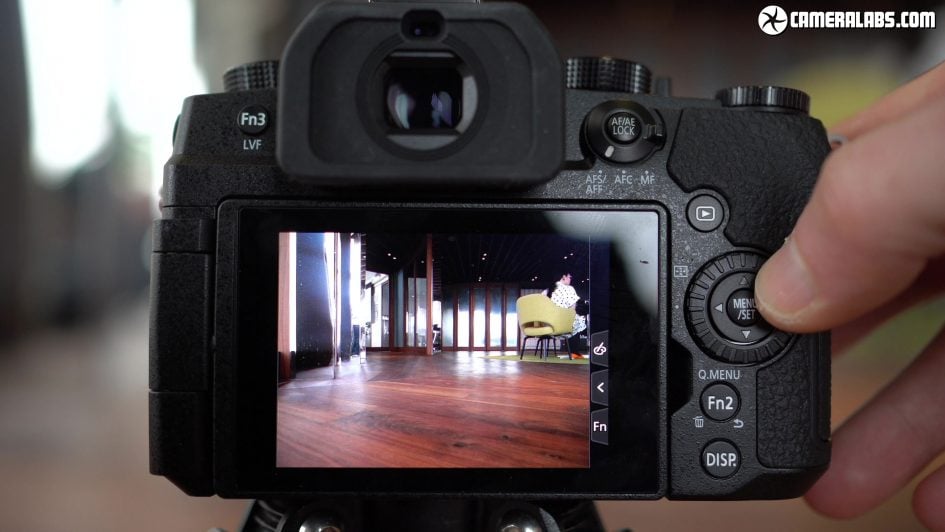
From the rear, Panasonic’s made some adjustments over the G80. There’s still a dedicated collar for adjusting the focusing mode, but there’s now the welcome addition of a rear thumb wheel, providing a third tactile means of adjusting options – something you wouldn’t expect on a camera at this price.
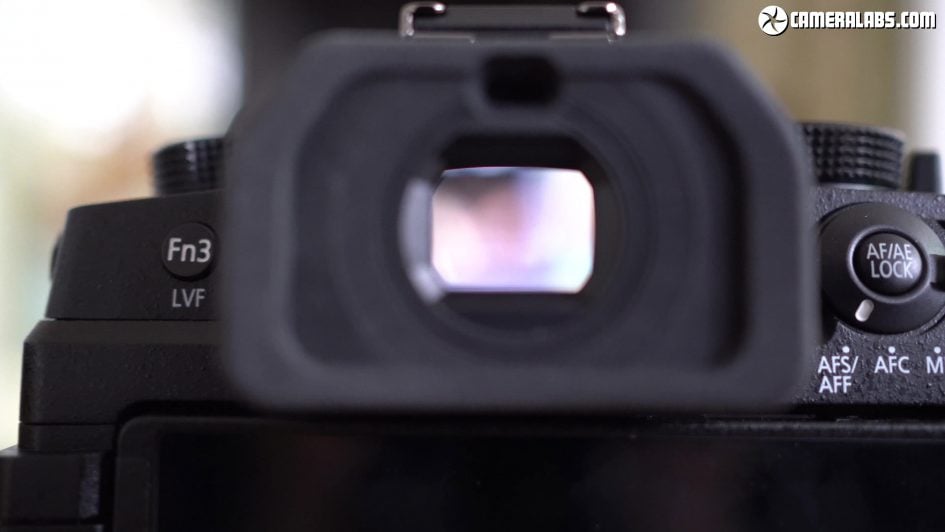
Panasonic’s equipped the G90 with the same 2360k dot OLED panel as its predecessor with the same 0.74x magnification, but that still delivers a bigger image than its current rivals do. Like all electronic viewfinders you can overlay a wealth of shooting guides and information, playback images, film video or navigate the menus.
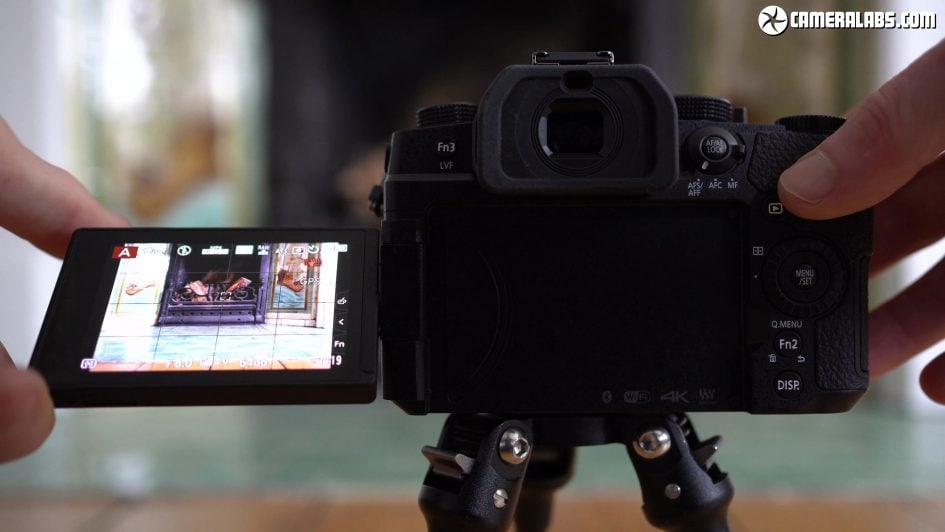
Thankfully Panasonic has kept the side-hinged fully-articulated screen, an absolute necessity for anyone who vlogs or films pieces to camera – yeah I know you might not be a vlogger and don’t care, but it’s also useful if you’re shooting in the portrait orientation at high or low angles. I prefer it to the vertical flip of the A6400 which can be blocked by a hotshoe accessory, and of course both beat the X-T30 in this regard who’s screen can’t face-forward at all. Oh and the screen isn’t exactly the same as its predecessor as the new model upgrades the LCD panel to an OLED for a punchier image.
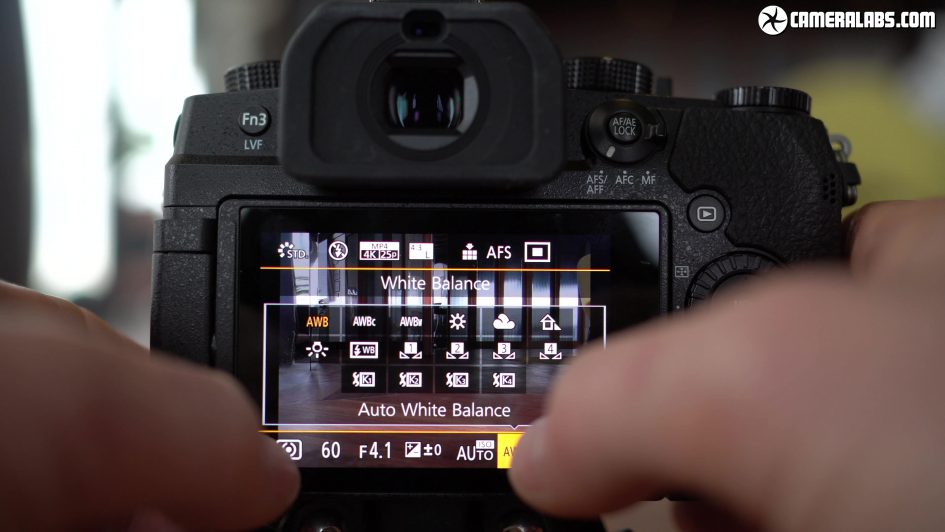
As always Panasonic makes good use of its touchscreen, allowing you to tap to reposition the AF area and now in a feature inherited from the Lumix S models even drag the size of the AF frame itself; you can also use the screen as a touchpad when composing with the viewfinder. Meanwhile the Q menu may not have received the makeover of Lumix S, but remains fully tappable, while the main menu itself can also be navigated by touch. You can of course use the dials and buttons if you prefer.
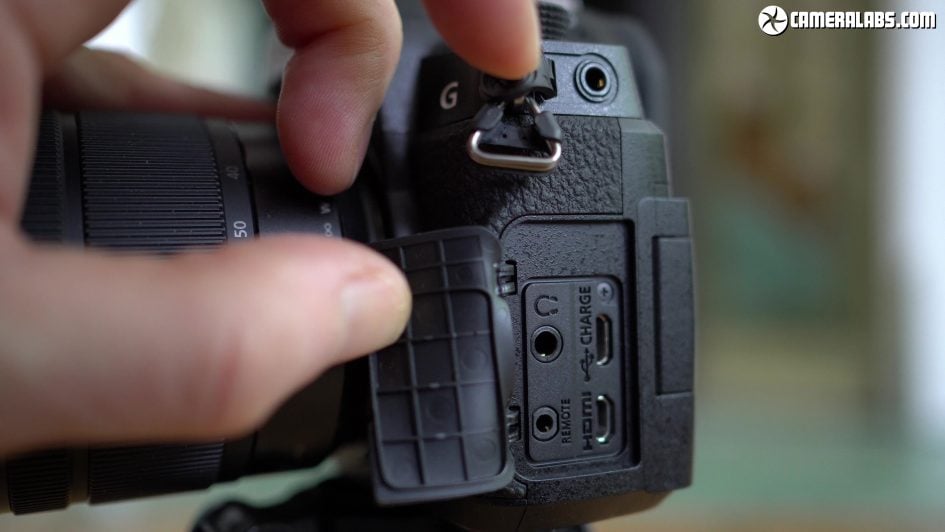
On the side, the microphone input now finds itself positioned nearer the top of the body, allowing the screen to flip out unobstructed. Then behind a large single flap you’ll find USB, HDMI, headphone and remote jacks. The headphone jack is a welcome upgrade and a feature that’s absent on the A6400 and which requires an adapter on the X-T30. It’s funny to recall the G80 couldn’t charge over USB, so thankfully Panasonic has also resolved that here, while also supporting USB power delivery, both in line with its rivals, although with an older Micro connector rather than USB C. Meanwhile the HDMI can output 4:2:2 8 bit, and there’s also now Wifi with Bluetooth to match rivals for wireless connectivity.
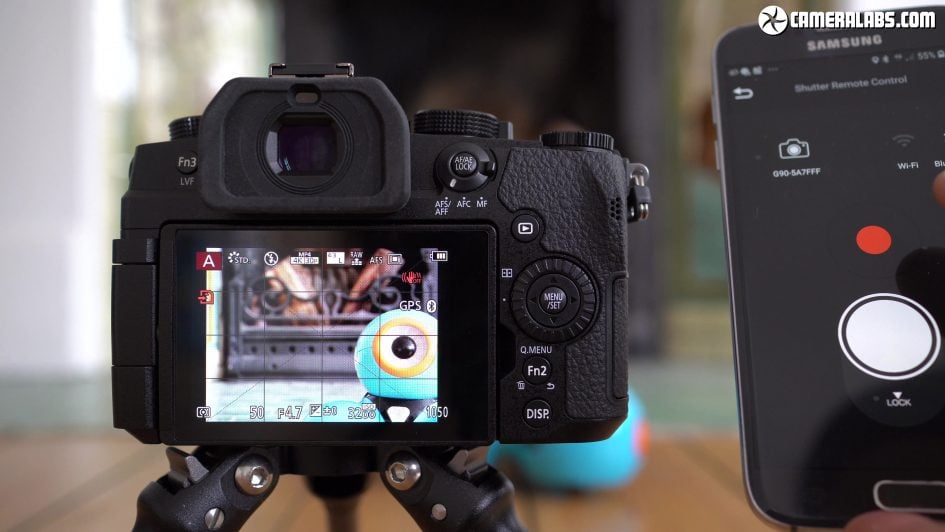
Panasonic’s mobile app can also exploit Bluetooth to seamlessly embed GPS locations from your phone as well as providing a quick and simple shutter release button for when you don’t need the full live view experience. Remote live view is still available though over Wifi, it just takes longer to make the connection.
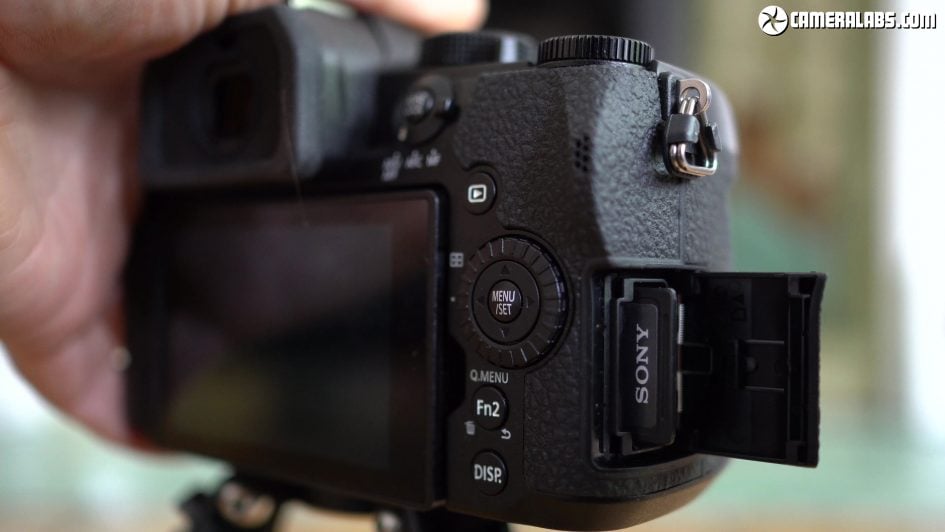
Like its predecessor, there’s a single UHS-II card slot – you wouldn’t expect two at this price – although unlike most mid-rangers I’m pleased it’s housed in a dedicated slot in the side which is much easier to access than a cramped battery compartment underneath the camera, especially when mounted on a tripod.
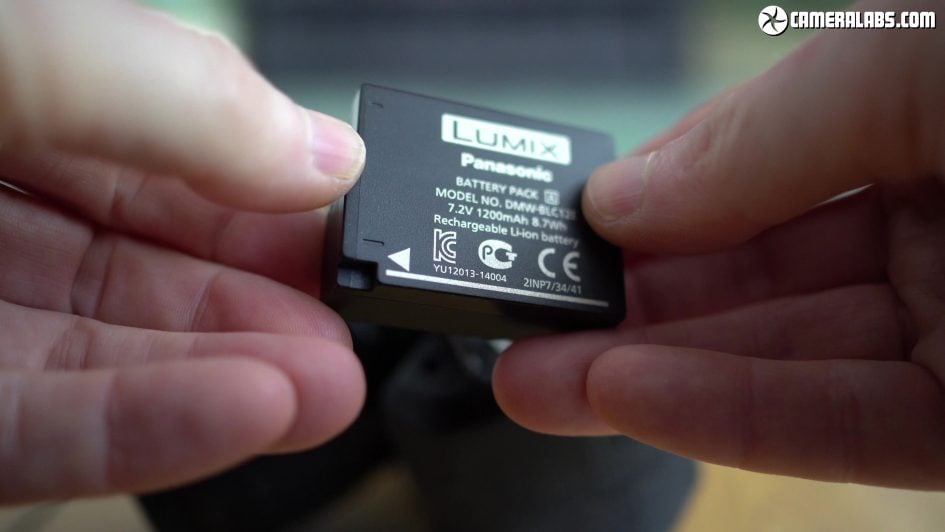
Speaking of the battery, the camera is powered by the BLC12E pack rated at 1200mAh and quoted as delivering a fairly modest 290 images in normal operation or up to 1000 in a power saving mode. In terms of video recording, I managed just over an hour and a half of 4k on a single charge, although remember the G90 can also be charged and powered over USB if you need longer.
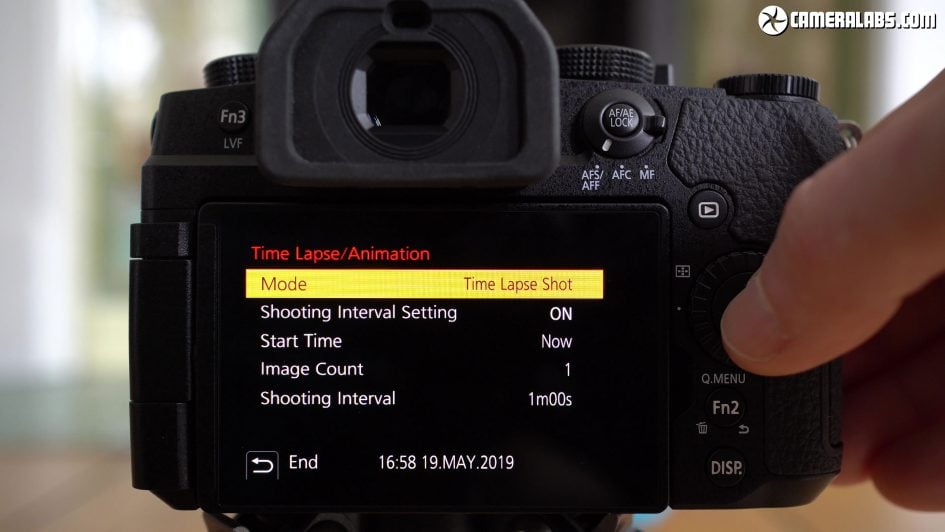
There’s also a built-in interval timer as well as stop motion video options, and inspired perhaps by the Olympus Live Bulb mode, the G90 also debuts a new Live View Composite mode that can make long Bulb exposures easier to manage.
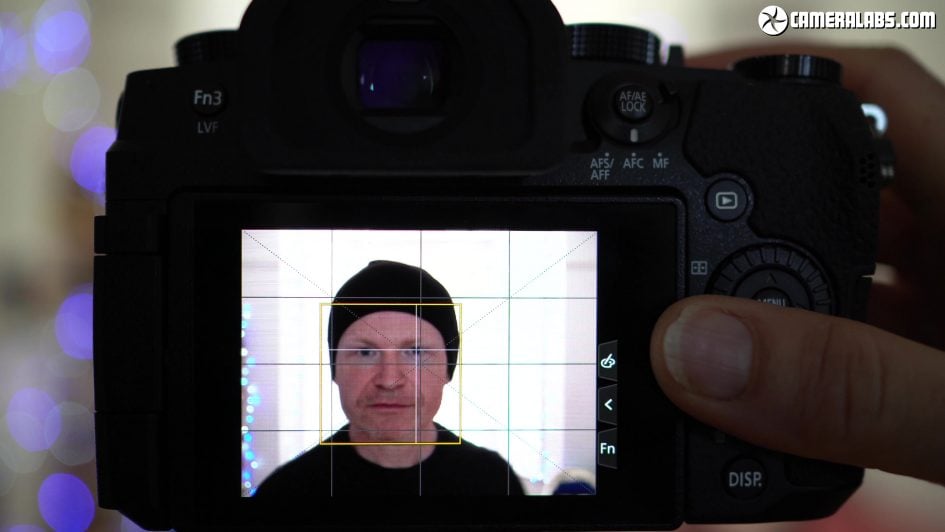
As you’d expect, the G90 features face and eye detection, and as seen here the crosshairs over the eye are like the Lumix S bodies, although the engine doesn’t support the body or animal detection of those models. In this clip I had the G90 fitted with the 12-60mm kit zoom at 25mm and set to its High burst speed of 6fps with continuous AF. Looking at the images afterwards, the G90’s DFD AF system did a fair job, but compare it to the Sony A6400 in this clip where it locks onto an eye at longer distances and delivered a higher hit rate. Don’t get me wrong, the G90’s DFD system is absolutely fine focusing in most situations but in some of my tests the A6400 proved more confident and it’ll also shoot faster.
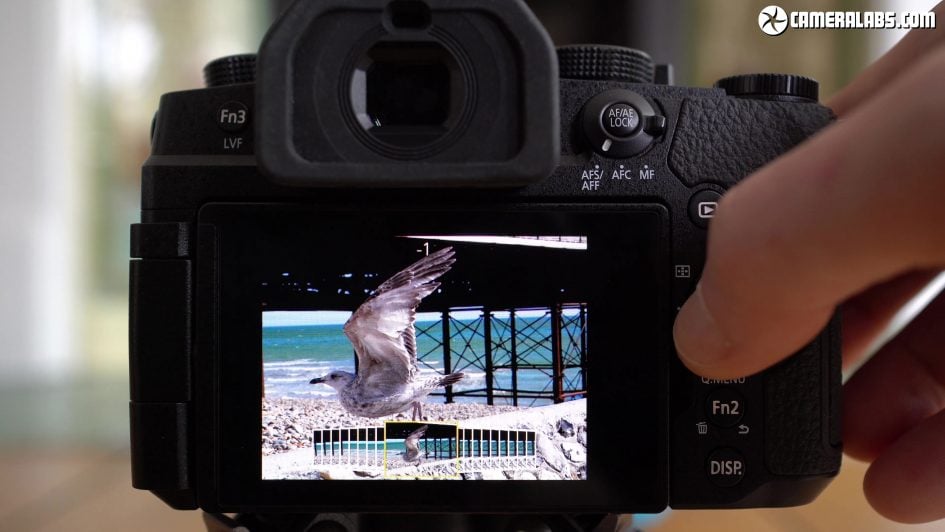
Like other Panasonic cameras, there’s 4K Photo, which provides an easy way to extract 8 Megapixel JPEGs from short video clips captured at 30 frames per second. Most cameras allow you to grab stills from video, but Panasonic’s approach is more innovative including pre-burst options that capture one second’s worth of frames before fully depressing the shutter to ensure you don’t miss the moment. It’s ideal for rewinding and grabbing the exact moment a bird takes flight even if you push the shutter a moment too late. Despite sharing the G9 sensor though, the G90 lacks the 6K Photo mode, so you’ll be extracting from 4K video at a maximum resolution of 8 Megapixels rather than 18.
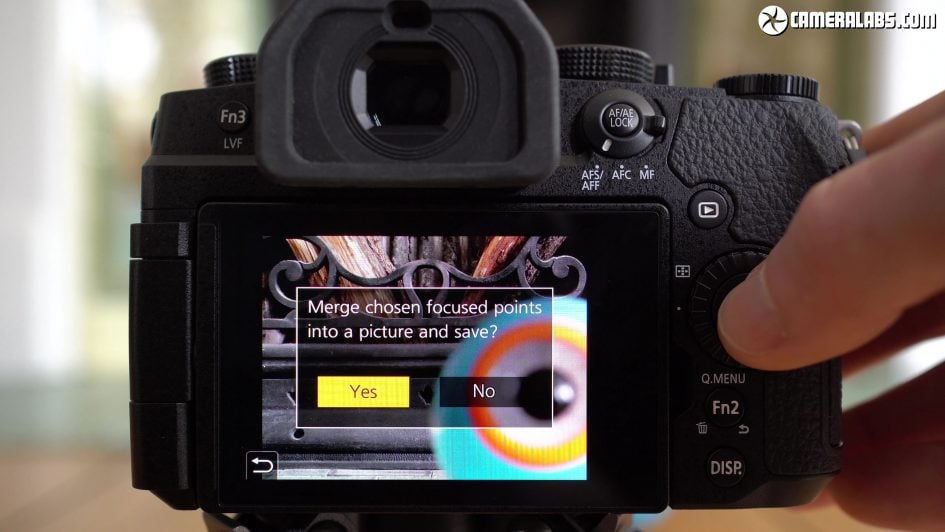
There’s also the post focus mode which racks focus from near to far while recording video, before letting you tap anywhere on the screen during playback to choose what part of the frame you’d like to be in focus. Like the other 4K Photo modes, you can extract as many stills as you like. While there’s nothing new here, and again not the 6K mode of the G9 either, I still think 4K Photo remains one of the best approaches to exploiting high res video for still photography.
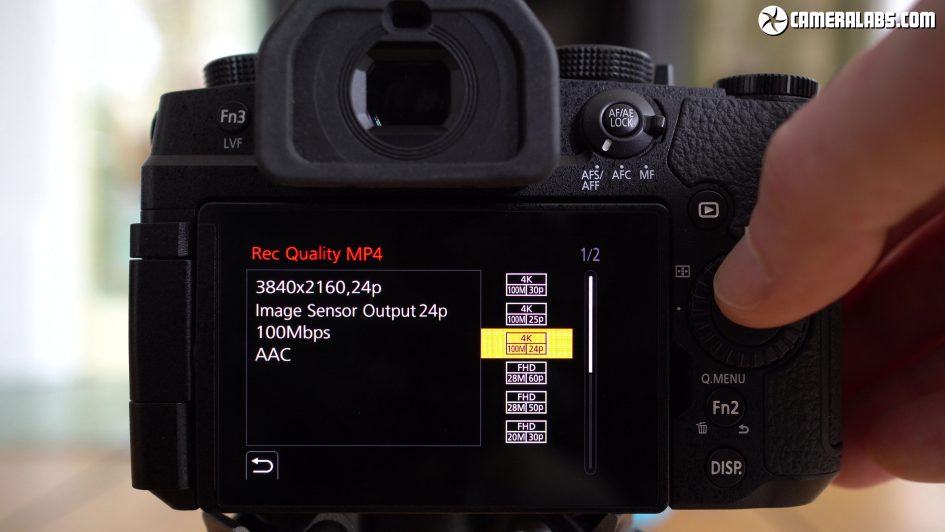
The G90 can film 720 video at 25 or 30p, 1080 at 25, 30, 50 or 60p, or 4k at 24, 25 or 30p; if you prefer 1080 at 24p, it’s available in the AVCHD mode. In a necessary upgrade over its predecessor to keep inline with rivals, there’s now slow motion 1080 video up to 120p, although sadly without sound or continuous AF, and also processed to 25 or 30p in-camera. There’s also a variety of crops to deal with.
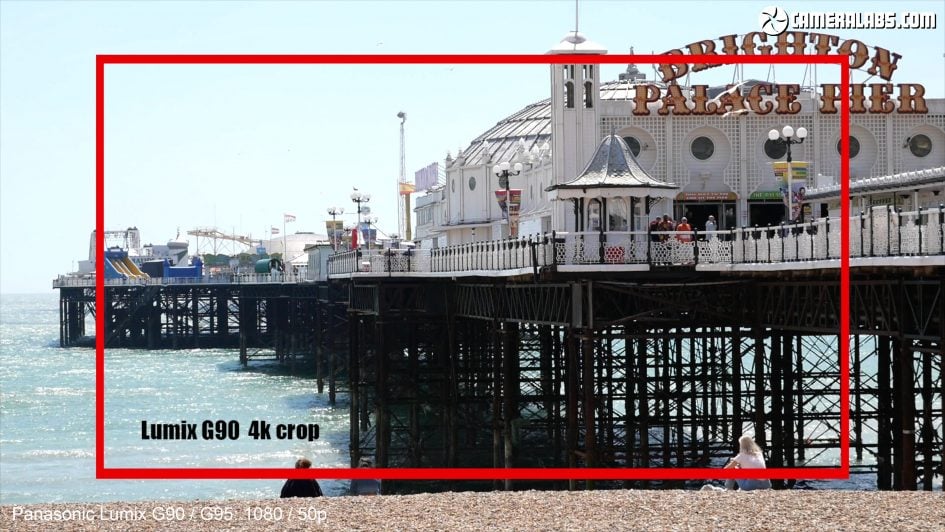
The G90 will film 1080 up to 60p using the full sensor width as you’d expect, but when set to 4k, it takes a rather substantial 1.26x crop, indicated by the outer edge of the frame here. This means you’ll need very short focal lengths for wide coverage.

Moving onto slow motion, the G90 takes a crop, albeit milder than 4k, when filming up to 90p, again indicated by the outer edge of the frame here.
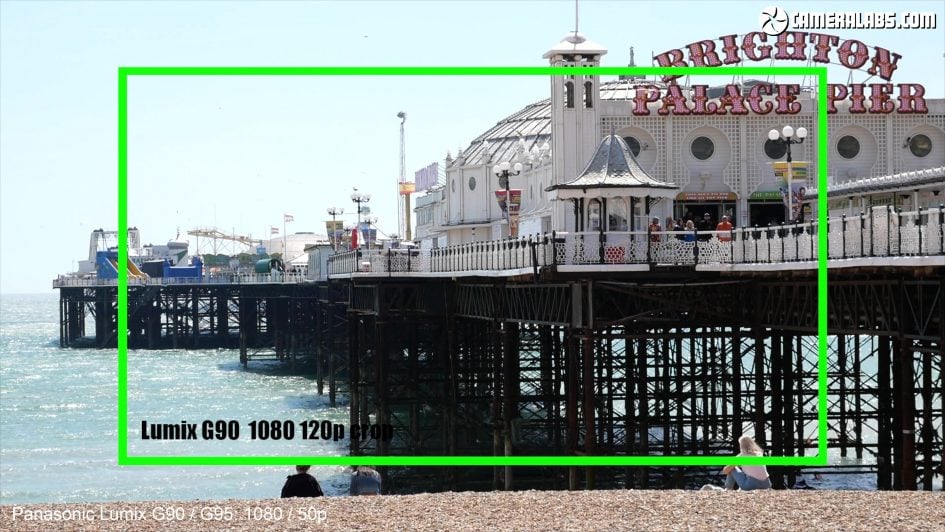
But at the top speeds of 100 and 120p, the crop becomes even tighter than 4k, soo beware if you need wide coverage. Before moving on, it’s worth noting the higher-end G9 allows you to capture 4k up to 60p and 1080 up to 180fps without any crop, a key advantage it has over the G90.
The G90 joins the A6400 in a fairly exclusive club of cameras that can keep recording video until you run out of memory or battery. I squeezed a single clip lasting 1 hour, 29 minutes and 43 seconds onto a formatted 64GB card and while the camera was warm afterwards, it was far from hot. The battery was almost consumed, but managed to record another 14 minutes afterwards given a new card; so I’d assume a 128GB card would be able to record a single 4k clip just over 100 minutes on a single battery charge, or of course longer given USB power.
Above: 4k 25p clip filmed using the standard profile. Also see my Lumix G90 G95 4k Cinelike D sample, Lumix G90 G95 4k V-Log L sample, and my Lumix G90 G95 1080p sample. Download the original file (Registered members of Vimeo only).
Above: moving onto focus-pulling using the touch screen, here’s the G90 filming in 4k 25p at around 30mm f5. The DFD AF system hunts a little to confirm its position at each end here, and you can see the breathing in the blurred areas. Interestingly it doesn’t seem as successful as the Lumix S1 in this regard. It’s ok, but not the best in this test. Download the original file (Registered members of Vimeo only).
Above: here’s another clip showing the Dual IS system in action in 4k with the 12-60mm kit zoom at around 17mm, again walking around without being too careful with my technique. Download the original file (Registered members of Vimeo only).
Check prices on the Lumix G95 at Amazon, B&H or Adorama. Check prices on the Lumix G90 at WEX. Alternatively get yourself a copy of my In Camera book or treat me to a coffee! Thanks!
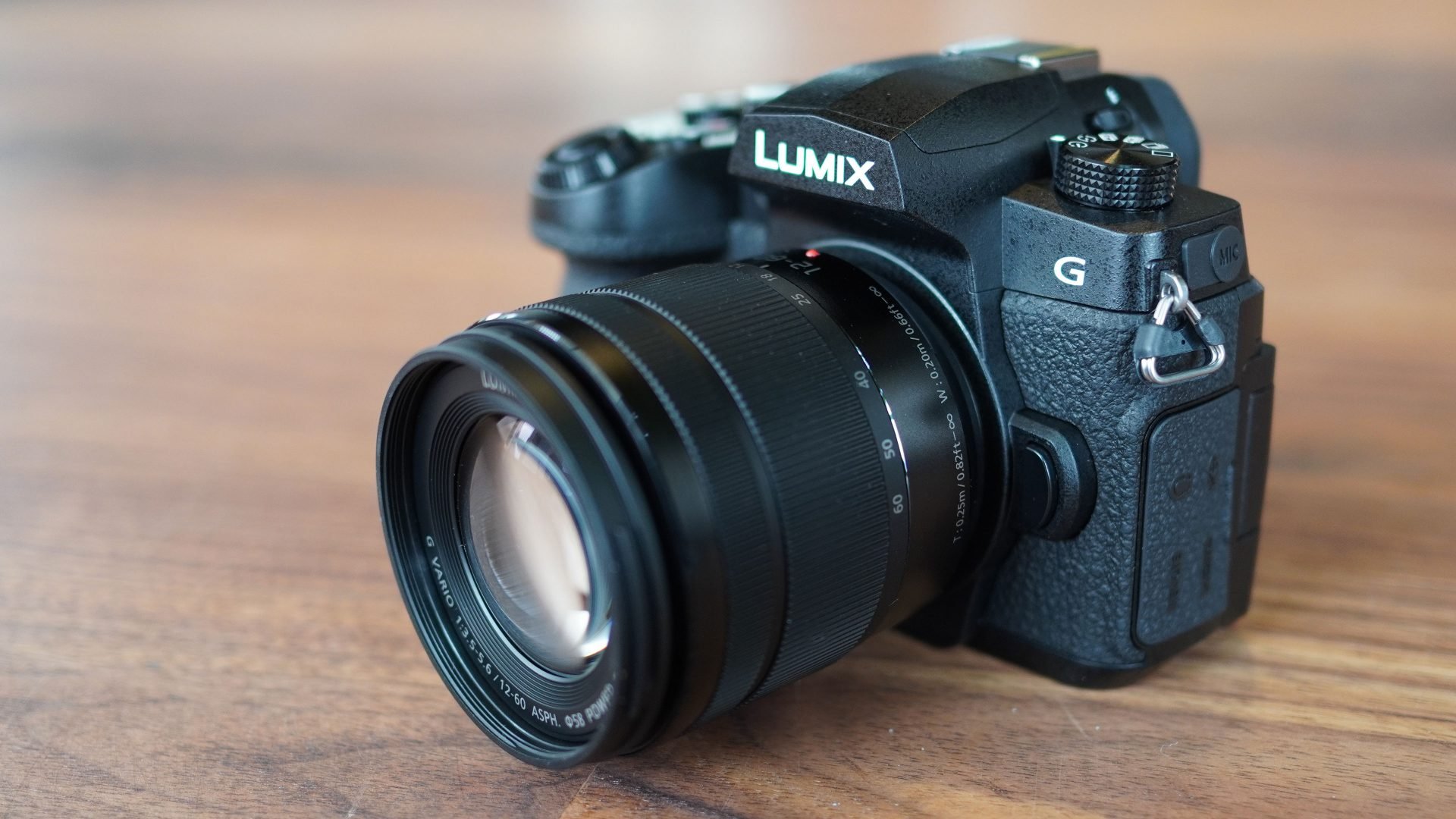
 The Lumix G90 / G95 is a mid-range mirrorless camera that takes the popular G80 / G85 with its comfortable body, decent viewfinder, fully-articulated screen and built-in stabilisation, and brings it up-to-date with a higher resolution 20 Megapixel sensor that matches the G9 for photo quality, unlimited movie recording times even in 4k, USB charging and power delivery, a very flat profile for grading, a headphone jack and Bluetooth to complement the Wifi. On the downside, the 4k video incurs a tighter crop than the G80, which limits its usefulness compared to 1080, and in my tests I also found the continuous autofocus less confident than the best of its rivals, especially for video. But these were my only complaints for what turned out to be a very capable and satisfying camera to shoot with. That said, there’s no getting away from the fact it does face tough competition from similarly-priced rivals, most notably the Sony A6400 and Fujifilm X-T30, so you’ll need to carefully weigh up the pros and cons when making your choice. Also keep an eye on the higher-end Lumix G9 which with discounting could give you a lot more camera for only a little extra money.
The Lumix G90 / G95 is a mid-range mirrorless camera that takes the popular G80 / G85 with its comfortable body, decent viewfinder, fully-articulated screen and built-in stabilisation, and brings it up-to-date with a higher resolution 20 Megapixel sensor that matches the G9 for photo quality, unlimited movie recording times even in 4k, USB charging and power delivery, a very flat profile for grading, a headphone jack and Bluetooth to complement the Wifi. On the downside, the 4k video incurs a tighter crop than the G80, which limits its usefulness compared to 1080, and in my tests I also found the continuous autofocus less confident than the best of its rivals, especially for video. But these were my only complaints for what turned out to be a very capable and satisfying camera to shoot with. That said, there’s no getting away from the fact it does face tough competition from similarly-priced rivals, most notably the Sony A6400 and Fujifilm X-T30, so you’ll need to carefully weigh up the pros and cons when making your choice. Also keep an eye on the higher-end Lumix G9 which with discounting could give you a lot more camera for only a little extra money.



